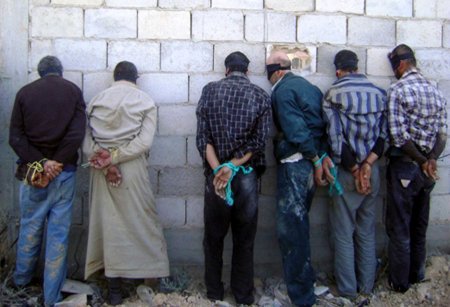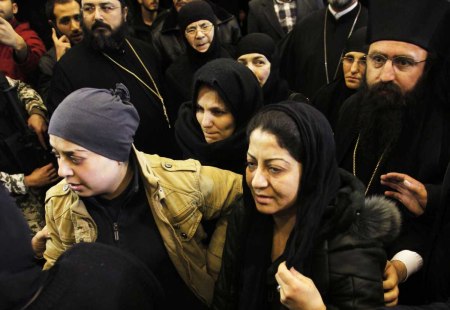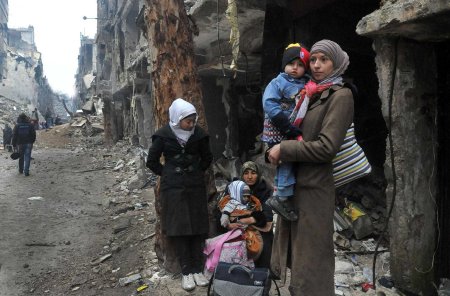Ziad Haydar As-Safir
Military operations subsided in the town of Duma in the Damascus countryside months ago, and they have been limited to sporadic mortar attacks of the rebels and artillery shelling from the army. This coincided with operations in the surroundings of this city, especially in Jobar and Harasta. Meanwhile, the slow advance to regain the city of al-Maliha has been going on for 40 days.
Duma, which is governed by an impartial local council, has started running its own affairs, while the situation in the surrounding eastern Ghouta area remains tense. The fighting factions are participating in the battles of Deir al-Asafir, al-Maliha, and Al Damir. Beside that there are clashes in Harasta, Jobar and the surroundings of the industrial city of Adra.
The absence of war-related news in Duma seems confusing, since the city is one of the largest hotbeds of opposition militants and constitutes a sensitive and strategic military spot for them. Moreover, repeated assassinations in the city indicate security imbalance and competition among the factions — mainly Duma Martyrs Brigade and the Islamic Front — to take over areas in this city.
Several activists are reporting the failure of investigations into assassinations this month targeting political opposition member Mohamed el-Flaytani and the military leader of the Duma Martyrs Brigade, Adnan Khabya. The failed investigations stem from the division into regions of influence of Duma’s neighborhoods and the lack of cooperation among factions. The disappearance of political activist Razan Zaitouneh and three of her colleagues carries the same indications. The city overlooking the eastern entrance of Damascus is overwhelmed with security problems that are bound to worsen.
Overshadowed by these tensions, operations of a different aspect are underway, and they are benefiting from the division among the rebel fighters: The Syrian situation has witnessed a general development reflected by the settlements, reconciliations, and exchanges of kidnapped people through agreements brokered by influential figures and philanthropists.
A couple of days ago, signs of a major agreement that could in the long term lead to the exchange of thousands of kidnapped people with thousands of detainees in the industrial city of Adra appeared, according to the chairman of the Popular Reconciliation Committee in Syria, Jaber Issa. He told As-Safir that the first family of eight members has been released on May 15 in the framework of “building trust and goodwill” between the two parties.
The first party is the Popular Reconciliation Committee and the security and military authorities, while the other party is represented by the fighting factions in Duma, whose identities were not revealed by Issa. Observers think that those factions most probably belong to the Islamic Front, which on the backdrop of the Homs settlement has already concluded a similar agreement with the Syrian authorities in the Latakia countryside and Aleppo.
Although the settlement was dubbed the “Adra settlement,” the real address was Duma, since the kidnapped people were held there and since Duma was the “fortress” and operation center of the abductors.
On May 14 the negotiating delegation received the last of the four women who were supposed to be handed to the militants, based on the conditions of the abductors. Then, one family was released, in parallel with the arrival of food aid to the region.
In compliance with the settlement steps, Issa also expects the armed factions to release three officers who were kidnapped after the invasion of Adra seven months ago. This will be followed by the other steps of the agreement, which include releasing 1,500 families in exchange for 1,500 detainees.
Issa, who said that he leads a network of reconciliation committees in Syria, did not disclose the time needed to implement the operation as a whole. He mentioned that one of the complications was the list of names of detainees, which has to be examined by the concerned authorities. The fighting factions taking part in this agreement mostly hold civilian families who were abducted.
Issa said that after implementing the agreement on exchanging the abducted families from Adra’s industrial city, there will be work on implementing an agreement to exchange all abducted soldiers in eastern Ghouta.
About 6,000 soldiers have been abducted throughout the ongoing three-year war.
Issa said in press statements that the Adra settlement was happening in parallel with other operations. He also noted that seven abducted people in Quneitra province were released, in exchange for 12 detainees, adding that two out of seven officers were released under an exchange agreement in the countryside of northern Latakia.
In this context, Al-Watan newspaper pointed to the development of a reconciliation operation in Al Tall, north of Damascus, while local coordination committees in Al Qadam declared a cease-fire between the militants and the Syrian army in Qadam and Assali, near Yarmouk camp, as a prelude to a settlement agreement.
Despite these encouraging developments, the terror acts by islamic militants continue.
SANA news agency reported that “one person died and three others were wounded after six mortar shells fell on Harasta. Five others were wounded after a missile fell on Dawaylaa in Damascus. Missiles were also launched on the Shaalan and Abbasiyin regions in Damascus, without any reported casualties.”




Keine Kommentare:
Kommentar veröffentlichen